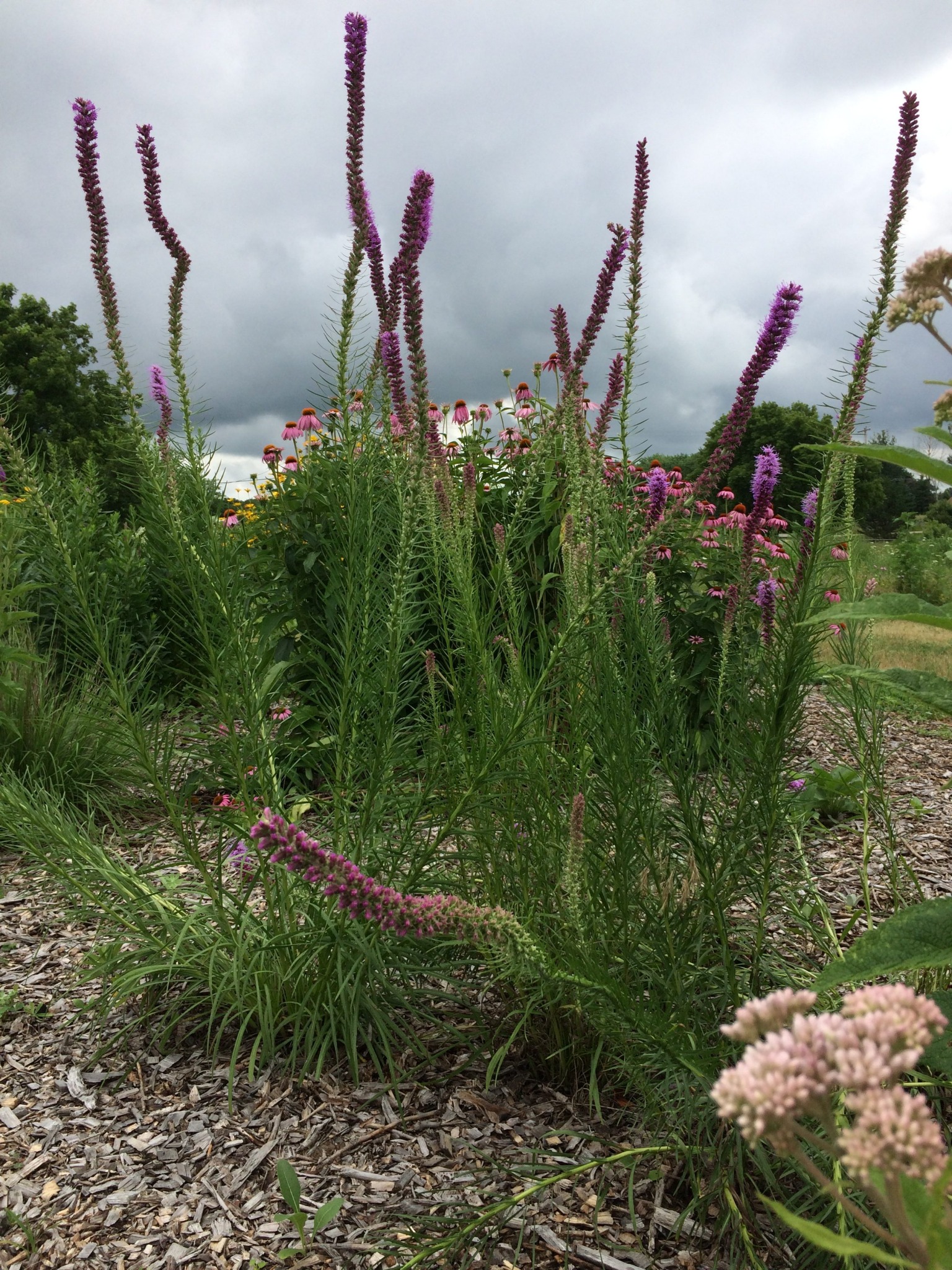Description
OUT OF STOCK
Tall, erect, purplish- pink spike in August-September
Tall, erect, purplish- pink spike in August-September
OUT OF STOCK
Tall, erect, purplish- pink spike in August-September
Towering creamy white flower spikes in May & June followed by dark seed pods.
Size: 3-5' x 2-3'
Care: full sun to part shade in rich well-drained soil.
Native: Wisconsin native – from Minnesota to Texas.
Wildlife Value: food source for several caterpillars and nectar and pollen for a number of butterflies and bees. Deer resistant.
Winnebago (HoChunk) mashed cooked root to make a poultice applied to remedy inflammation of the womb. Baptisia is Greek meaning to dye referring to use of Baptisia australis as a substitute for indigo dye. Leucantha means white flowered.
Wispy, feather-like seedheads atop blue-grey foliage that turns plum-orange-red in fall
Size: 18" x 12"
Care: sun in well-drained soil.
Native: all No. America, Wisconsin native.
Wildlife Value: leaves are food for Skipper butterfly caterpillars and seeds food for songbirds
Comanche used it to remedy syphilitic sores. Lakota made soft, wispy seedheads into liners for moccasins. Collected by French plant hunter André Michaux (1746-1802) in America’s prairies c. 1790
OUT OF STOCK
Clean white variegated leaves and flowers (bracts), very showy midsummer to fall. Use caution with internal milky sap.
Size: 18” x 10”
Care: sun moist well-drained soil, drought tolerant.
Native: Plains from Dakota to Texas
Size: Wonderful cut flower just be careful of the milky sap.
Sioux crushed leaves in water and boiled it for a liniment to remedy swelling; boiled whole leaves in water to increase milk for new mothers. Collected on Lewis and Clark expedition three times, once July 28, 1806 along Marias River. A “most elegant species.” Breck, 1851.
Golden daisies waive at the sun from July to September, its cup shaped leaves hold water where butterflies drink & bathe
Can not ship to: Connecticut and New York
Size: 7’ x 3’
Care: full sun to part shade in moist to moist well-drained soil
Native: Central North America, native to Wisconsin.
Awards: England’s Royal Horticultural Society Award of Merit
Sap used by Native Americans to chew and freshen breath. Also used to cure colds, neuralgia, fever, and liver disorders. The Chippewa used it to stop lung hemorrhaging, menstrual bleeding, and cure chest pain. Winnebago drank a potion from the plant to purify themselves before a buffalo hunt. For the Iroquois it cured paralysis, prevented children from seeing ghosts and illness caused by the dead. Lakota Sioux children sometimes chewed resin like chewing gum. An infusion of the whole plant is used to rid horses and humans of intestinal worms. An infusion of the leaves is used to loosen phlegm in the lungs. Described and classified in 1753.

